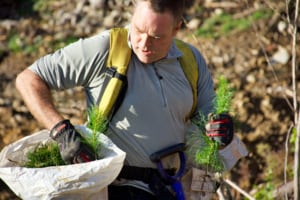
By Martin Townsend, Director for Centre of Excellence for Sustainability at BSI.
As biodiversity is one of the key discussions at COP27, it is worth considering that reversing biodiversity loss doesn’t mean merely protection. We can’t remove all human activity from having an impact on nature. What we can do is be a lot smarter about how we see our natural capital as an asset that can provide net gains, not just protect against losses. We need to evolve our ecosystems, not just protect them. In our work, we see instances of species evolving to adapt to man-made changes in their environment. We need to think about the habitats we’re creating, considering a changing climate. If we limit our thinking about biodiversity to protecting what we’ve got, we may find that droughts, floods, and seasonal extremes take more and more biodiversity away from us over time. So, when reshaping habitats, incorporating more resilient species like drought-resistant plants must be part of how we reshape our environment.
Natural capital is not just a bank account we should stop withdrawing from – it is an asset we should be finding ways to add into. We work with businesses that understandably want to reduce their impact on the environment, but we encourage them to rethink what that means. Think of a company that, because its processes were causing biodiversity loss in an area, decided to move its operations to a less environmentally sensitive area. Even though the economic impact might be devastating for the community it would leave. What if instead it focused on changing those processes, rehabilitated the ecosystem it was impacting, and maintained the economic benefits for the community it was operating in?
As more companies take this more enlightened approach, they also need to recognize that good intentions aren’t going to be enough. Investors know that consumers will not just punish brands and companies that harm the environment, but increasingly are suspicious of “greenwashing” when companies claim to have become more sustainable.
To create solutions that work for both people and planet, we need an approach to biodiversity that starts with an understanding that we can’t simply walk away from nature or pretend that the climate isn’t changing. We need to make smart choices that grow our natural capital, not just prevent further loss. But equally as we become more aware of the natural world around us, nature can also teach us as businesses on how to be more agile, as it spends more time out of balance and in several possible alternative states creating a truly subtle dance between resilience and sustainability, which as businesses we sometimes have yet to achieve.



